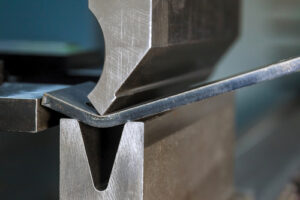 Metal machining has played a pivotal role in shaping our modern world, revolutionizing industries and driving technological advancements. This historical expedition traces the evolution of metal machining, exploring key milestones, innovations, and the transformative impact on various industries. Join us as we embark on this fascinating journey through time, encapsulating informative insights with engaging storytelling.
Metal machining has played a pivotal role in shaping our modern world, revolutionizing industries and driving technological advancements. This historical expedition traces the evolution of metal machining, exploring key milestones, innovations, and the transformative impact on various industries. Join us as we embark on this fascinating journey through time, encapsulating informative insights with engaging storytelling.
1. The Early Beginnings: From Hand Tools to Water-Powered Mills
Our journey begins in ancient times when metal machining first emerged as a means to shape and manipulate metals. In the early days, skilled craftsmen relied on hand tools like chisels and saws to shape metal parts. However, it was the invention of water-powered mills in the ancient world that marked a significant turning point. These mills allowed for more precise and efficient metal machining, ushering in a new era of productivity.
2. The Industrial Revolution: Steam Power Transforms Metal Machining
The 18th and 19th centuries witnessed the advent of the Industrial Revolution, which heralded a seismic shift in metal machining. Steam engines replaced water-powered mills, providing even greater power and precision. Developments like the steam-powered lathe and milling machine revolutionized the manufacturing process, enabling the mass production of metal parts on an unprecedented scale. This era marked the birth of modern metal machining and laid the foundation for the industrialized world we live in today.
3. The Rise of Precision Machining: The Birth of Interchangeable Parts
The late 18th century saw the emergence of precision machining, a groundbreaking concept that can be attributed to Eli Whitney. Whitney’s revolutionary idea of interchangeable parts paved the way for the mass production of complex machinery, including firearms. By standardizing component dimensions and tolerances, manufacturers could now produce parts that were both precise and interchangeable, reducing production time and costs. This breakthrough became the cornerstone of modern manufacturing, spanning various industries.
4. The Arrival of the Assembly Line: Henry Ford and the Automotive Industry
The early 20th century brought about another transformative moment in metal machining with the introduction of the assembly line. Henry Ford’s pioneering approach to manufacturing automobiles revolutionized the industry, significantly increasing efficiency and productivity. Metal machining played a crucial role in this innovation, as Ford’s assembly-line production methods required the precise fabrication of countless parts. The spread of these assembly-line techniques to other industries further accelerated the demand for metal machining capabilities.
5. Advanced Manufacturing: Computer Numerical Control (CNC)
The latter half of the 20th century witnessed the rise of computer numerical control (CNC) machining. This technological breakthrough replaced manual control with computerized automation, allowing for greater precision, efficiency, and repeatability in metal machining. CNC machines could execute complex operations with minimal human intervention, opening up new possibilities in terms of design complexity and manufacturing capabilities. Industries like aerospace, automotive, and electronics benefited immensely from CNC machining, driving innovation and propelling technological progress.
6. The Digital Revolution: 3D Printing and Additive Manufacturing
As we step into the 21st century, we find ourselves amidst the digital revolution, which has brought forth groundbreaking advancements in metal machining. The advent of 3D printing and additive manufacturing technologies has expanded the realm of possibilities. These revolutionary techniques enable the creation of intricate metal parts, layer by layer, using computer-aided design (CAD) models. With additive manufacturing, manufacturers can create highly customized components while reducing waste and material consumption, opening doors to unimaginable design flexibility and product innovation.
7. The Future of Metal Machining: Automation and Artificial Intelligence
As we look ahead, the future of metal machining is poised to be shaped by automation and artificial intelligence (AI). Advanced robotics and machine learning algorithms are increasingly being integrated into the metal machining process, enhancing precision, productivity, and speed. With the advent of the Internet of Things (IoT), machines are becoming increasingly interconnected, enabling real-time data analysis and optimization. As AI continues to evolve, we can expect further breakthroughs in autonomous metal machining and predictive maintenance, pushing the boundaries of what is possible.
Summary
Metal machining has undergone a remarkable transformation throughout history, propelling industries forward and shaping the world we live in today. From hand tools to advanced automation, this journey through time has showcased the continuous pursuit of precision and efficiency. As we forge into the future, the prospects for metal machining are boundless, promising unprecedented innovations and possibilities. Join us as we embark on this extraordinary expedition, celebrating the art and science of metal machining.
Need an Industrial Machine Shop in Baton Rouge, LA?
Metal Works Corporation stands as a beacon in the world of metalwork—a premier machine shop where craftsmanship is not just a process but an art form. Our commitment to precision, design, and expertise elevates metalwork to new heights. As we continue to push boundaries and redefine industry standards, we invite you to witness the artistry that sets us apart—the artistry that transforms metal into more than just components but into timeless masterpieces. Contact us today to learn more about what we can do for you!

